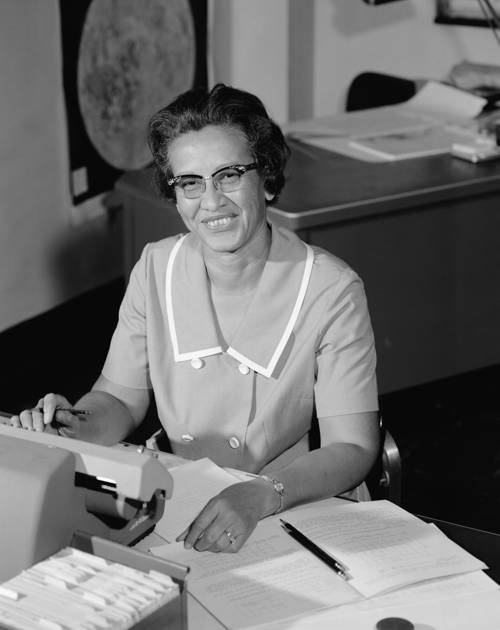
FAQ About Katherine Johnson

Who was Katherine Johnson?
Katherine Johnson was an American mathematician whose calculations of orbital mechanics were critical to the success of United States spaceflights. She worked for NASA and its predecessor NACA, contributing significantly to the Project Mercury and Apollo missions.

What were Katherine Johnson's major contributions to NASA?
Katherine Johnson's major contributions to NASA included calculating trajectories, launch windows, and emergency return paths for Project Mercury and Apollo missions. Her work on the calculations for John Glenn's orbital flight in 1962 and the Apollo 11 moon landing in 1969 was particularly noteworthy.

What is Katherine Johnson's full name?
Katherine Johnson's full name is Katherine Coleman Goble Johnson.

When and where was Katherine Johnson born?
Katherine Johnson was born on August 26, 1918, in White Sulphur Springs, West Virginia, USA.

What was significant about Katherine Johnson's work on John Glenn's flight?
Katherine Johnson is most famous for her work on John Glenn's orbital mission, where she manually verified the orbital equations that had been programmed into the IBM computer. Glenn specifically requested that Johnson recheck the calculations, highlighting the trust placed in her expertise.

Which university did Katherine Johnson attend?
Katherine Johnson attended West Virginia State College, where she graduated summa cum laude with degrees in mathematics and French.

What honors and awards did Katherine Johnson receive?
Katherine Johnson received numerous honors, including the Presidential Medal of Freedom in 2015, the Congressional Gold Medal in 2019, and was inducted into the National Women's Hall of Fame.

How did Katherine Johnson begin her career at NASA?
Katherine Johnson began her career at the National Advisory Committee for Aeronautics (NACA) in 1953, working in the West Area Computing unit that was composed entirely of African-American women. She later transitioned to NASA when it was formed in 1958.

What role did Katherine Johnson play in the Apollo 11 mission?
Katherine Johnson calculated the trajectory for the Apollo 11 flight to the Moon in 1969, ensuring that the mission would successfully bring humans to the lunar surface and return them safely back to Earth.

Did Katherine Johnson face discrimination in her career?
Yes, Katherine Johnson faced racial and gender discrimination throughout her career. Despite these challenges, she persevered and made historical contributions to space exploration, often working behind the scenes for much of her career before the wider recognition she later received.

What was Katherine Johnson's role after NASA?
After retiring from NASA in 1986, Katherine Johnson became an advocate for mathematics education, inspiring future generations through public speaking and appearances.

When did Katherine Johnson retire from NASA?
Katherine Johnson retired from NASA in 1986 after a distinguished career of over 33 years.

Did Katherine Johnson have any family?
Yes, Katherine Johnson was married twice, first to James Goble and later to Lt. Colonel James A. Johnson, and she had three daughters: Constance, Joylette, and Katherine.

How did Katherine Johnson impact future generations of women in STEM?
Katherine Johnson broke barriers for women and minorities in STEM fields. Her contributions and the recognition she eventually received have inspired countless women and minorities to pursue careers in science, technology, engineering, and mathematics.

Where can I find more detailed information about Katherine Johnson's life and work?
More detailed information about Katherine Johnson's life and contributions can be found in "Hidden Figures," official NASA publications, and numerous documentaries highlighting her work and legacy.

When did Katherine Johnson pass away?
Katherine Johnson passed away on February 24, 2020, at the age of 101.

What fields of study did Katherine Johnson focus on throughout her education and career?
Katherine Johnson focused on mathematics throughout her education and career, with a particular emphasis on celestial navigation and orbital mechanics during her time at NASA.

Why is Katherine Johnson considered a pioneer for African-American women in science?
Katherine Johnson is considered a pioneer because she broke racial and gender barriers at NASA and laid a foundation for future generations to enter and excel in scientific fields that were once largely inaccessible to African-American women.
